< Back to Articles
Tying Tail Gut
There are two ways to tie tail gut, depending on the type of tailpiece you are using. The first, like a modern tailpiece, has the tail gut which exits the end of the tailpiece and curves over the saddle and around the end pin. The second method uses two holes which pass through the and the gut passes from the top of the tailpiece, through to the bottom, and then over the saddle and around the end pin. Either of these systems are adaptable to the use of gut and instructions for tying are given below.
In Order to Put Gut On a Tailpiece You Will Need:
Tail gut
Stitching gut
Something to cut the gut with, (clippers, nippers, knife, etc)
A flame source, (lighter, alcohol lamp, etc.)
Tail gut is usually sold by a diameter thickness. Violins and violas use gut that is from 1.90mm to 2.20mm thick. Cellos use a gut around 3.00mm thick and a violone / double bass should use a gut about 5.00mm thick.
The thickness that you choose depends on the qualities you are looking for. A thicker gut will be more stable and stretch less than a thinner gut, but it may not allow as much vibration in the tailpiece as the instrument needs to sound its best. One of the advantages to the use of real gut over synthetic gut is that the flexibility of the tail gut can be changed simply by changing the diameter of the gut and this can have a radical effect on the tone and response of the instrument.
Stitching gut is about .50mm thick. It is possible to save old violin e-1 strings for use as stitching gut.
Putting Gut on a Modern Tailpiece

The first task is to burn one end of the tailgut.

Next, you hold the stitching gut in place on the tailgut with a couple of inches sticking up, away from the tailgut. The rest of the length of stitching gut can hang down.

Take the long section of stitching gut and wrap it around both the tailgut and the short section of stitching gut.

Wrap the stitching gut around a second time, wrapping toward the burnt end.

And then repeat the wrap, so that you have at least three turns around the tailgut and stitching gut. At this time you can release you hold on the loop of stitching gut you have been holding against the tailgut.

Next, pass the long length of stitching gut through the loop.

Now, pull both ends, so that the stitching gut is tightly bound onto the tailgut gust below the burnt end.

Next, clip both ends of the stitching gut so that there is about 1/8" on each side.

Then, burn each end of the stitching gut close to the wraps.

So that they look like this:

Then, slip the tailgut through the tailpiece.
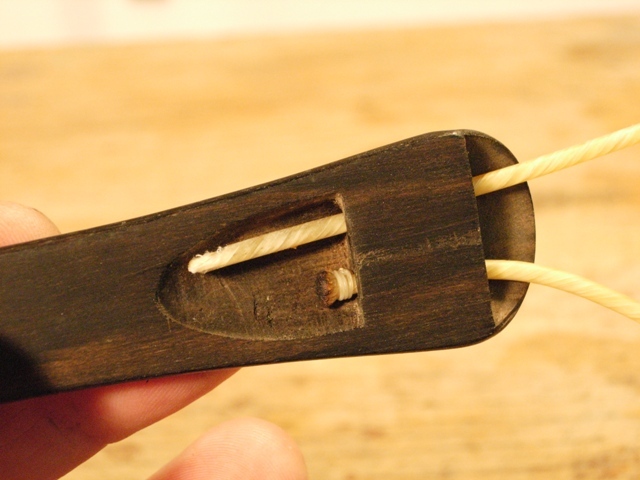
Bring the other end of the tailgut up through other hole.

Put the tailpiece on the instrument and gauge the length of the tailgut. The exact length will depend on your own thoughts about tailgut length, and, since that is not the point of this essay I will not get into the theories about tailgut length here. Use your own system to establish the length of the tailgut and mark the gut with a pencil just at the inside of the tailpiece.
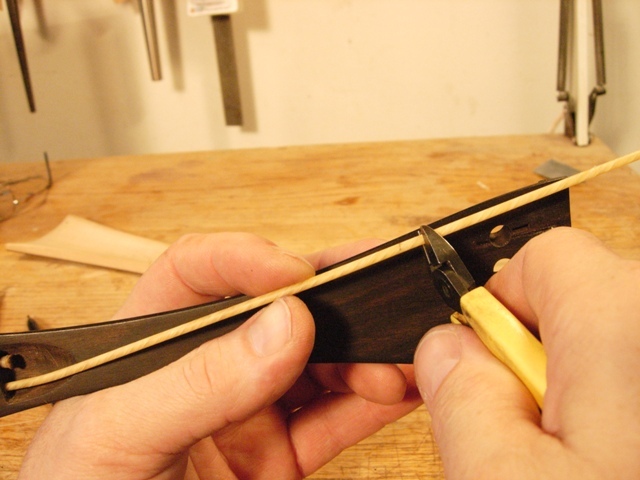
Cut the tailgut about 1/4" from your mark.
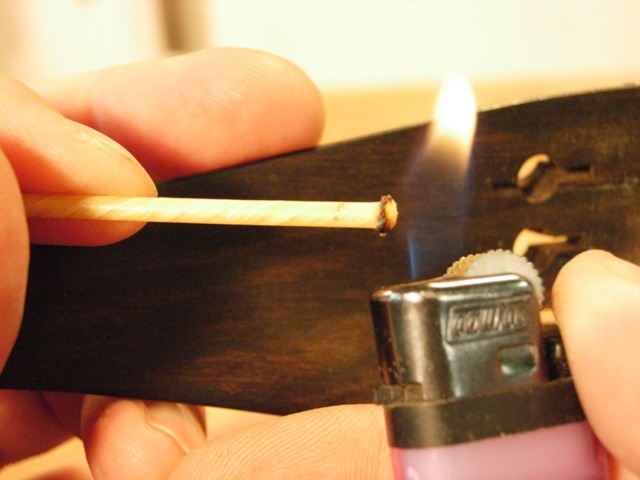
Burn the end of the gut about 1/8', or about 1/2 way down to your mark.
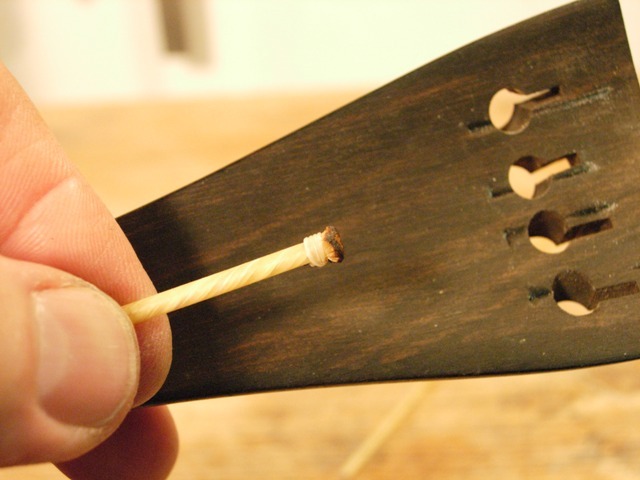
Repeat the tieing process described above, so that the wraps of the stitching gut come just down to your mark.
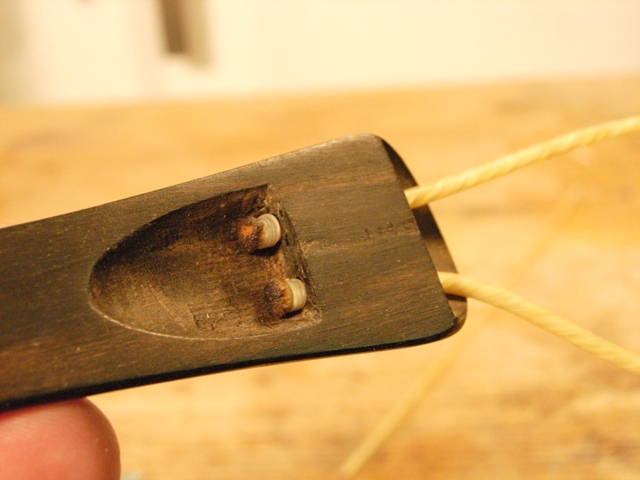
The sticthing gut will compress against the burnt tailgut ends and hold the gut in place.

Now you have a nice, strong tailgut fitted and ready to go on the instrument.
Putting Tailgut on a Historical Tailpiece: The Stradivari Stitch

First, pass one end through the top of the tailpiece.

Then, pass the other end of the tailgut through the other hole, top to bottom.

Pull both ends through and tightly close the loop at the top of the tailpiece.

Put the tailpiece on the instrument and gauge the length of the tailgut. The exact length will depend on your own thoughts about tailgut length, and, since that is not the point of this essay I will not get into the theories about tailgut length here. Use your own system to establish the length of the tailgut and mark the gut with a pencil just at the inside of the tailpiece. You will need to allow the length you want for the gut, plus about 3/4" for each end to cross over the other.

Next, burn each end of the gut about 1/8" down.

Now, set the tailpiece aside and prepare the stitching gut. Burn one end of the stitching gut.

Then, loop this burnt end.

What we want to do is to make a simple slip knot. So, bring the burnt end around the loop, making a hole which you will stick the burnt end through.

Pull the hole tight against the burnt end, so that the knot will slide up and down the long length of stitching gut, making the loop smaller and larger.

Next, cross the ends of the tailgut over each other and get a feel for the length, as pictured below.

Then, Loop the slip knot around one end of the tailgut and pull tight.

Next, replace the ends of the tailgut in the crossed-over position, and bring the stitching gut around the back of the bottom piece and up the near side.
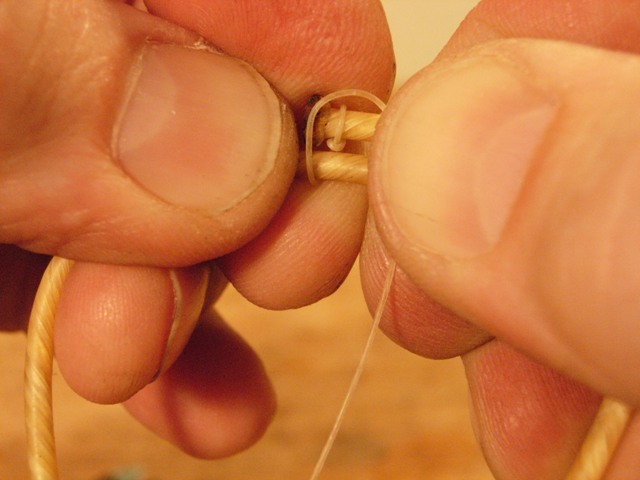
Create a loop by bringing the stitching gut down the near side.

Bring the end of the stitching gut around to the back of the tailgut and up through the loop on the near side.

Pull the stitching gut up, making the loop tight.

So that it looks like this.

Now, make another loop down the near side.
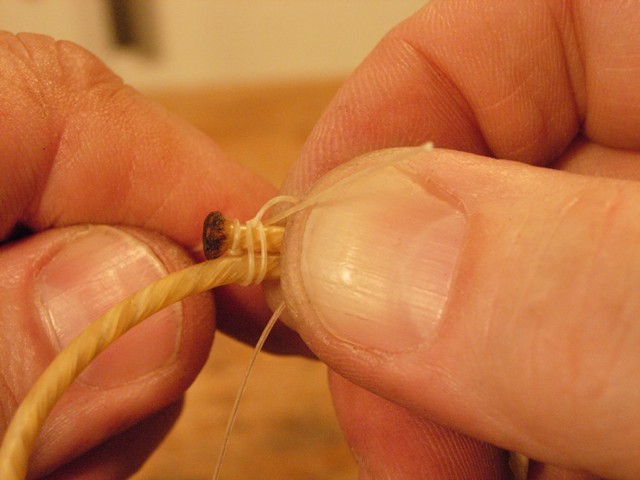
Again, bring the stitching gut around to the back side and through the loop.
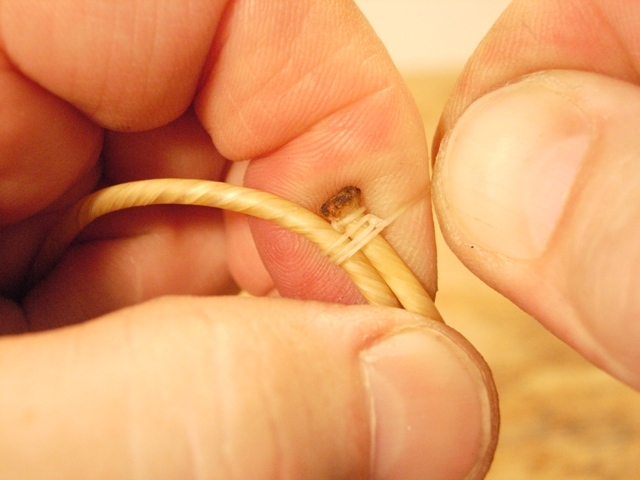
And pull this loop tight.
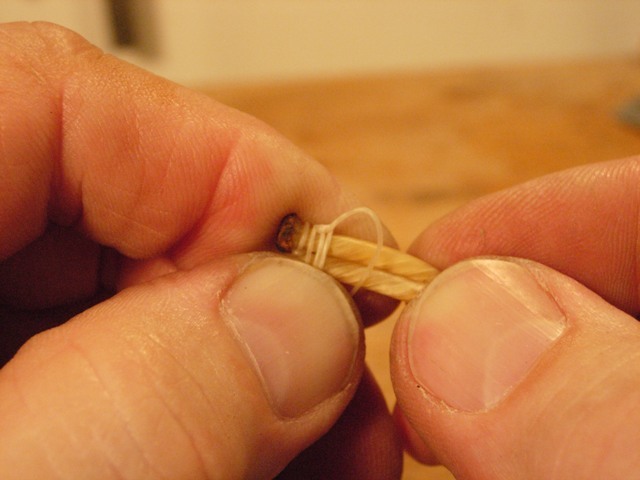
Make another loop down the front side,
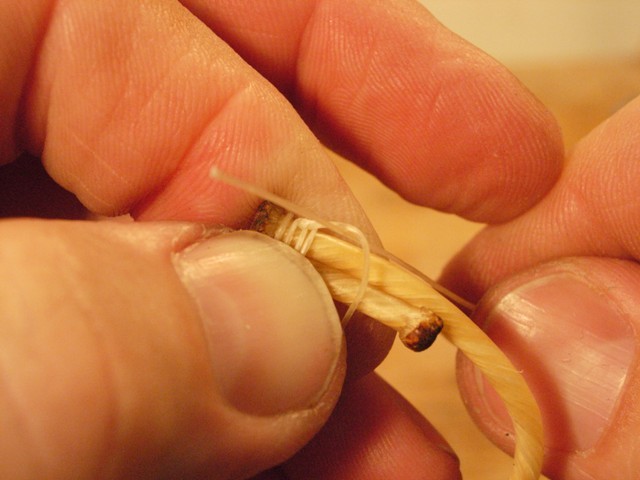
And bring the stitching gut around and through the loop.
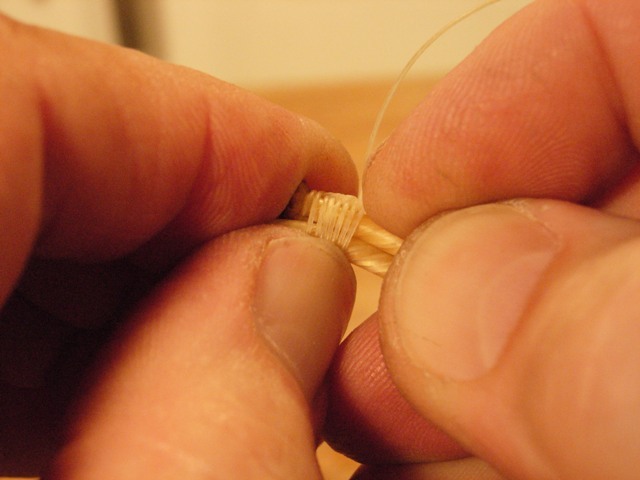
Repeat this process until you have covered the space between the two burnt ends. Once every four loops, or so, you should compress the stitches together so that they are tightly compacted.

When you have completed the stitches, pull the last one tight.
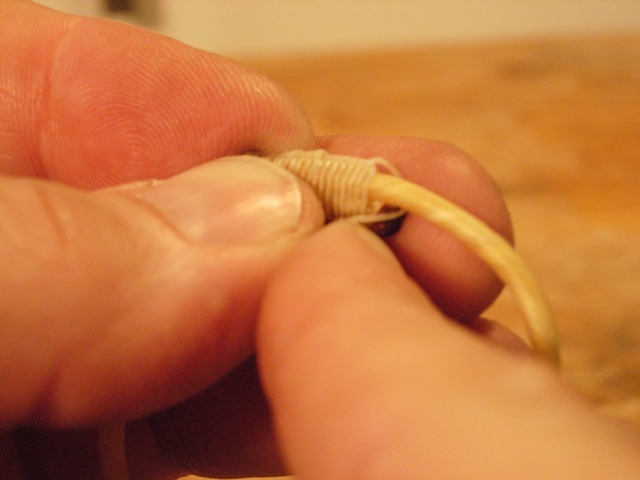
And bring the stitching gut around the only the top tailgut piece.
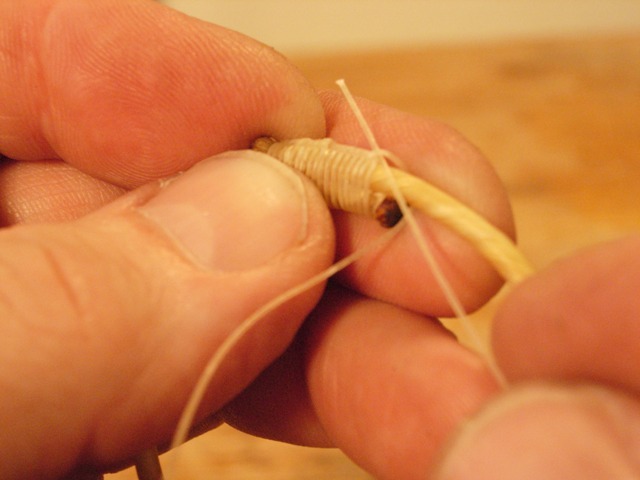
Bring the end of the stitching gut through the loop you have created.
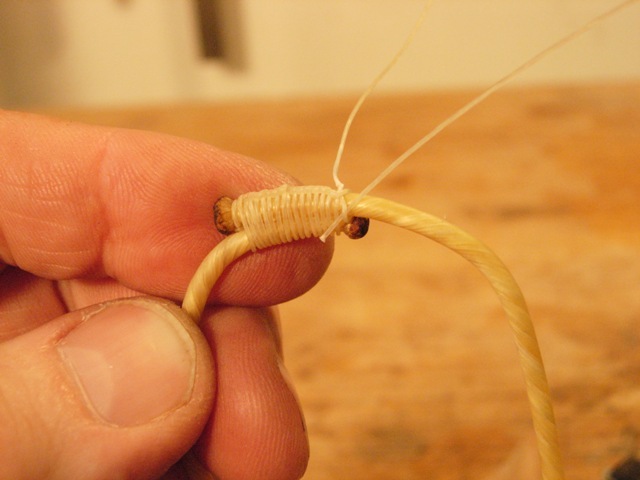
Pull this tight, but leave just enough space for the stitching gut to pass through.
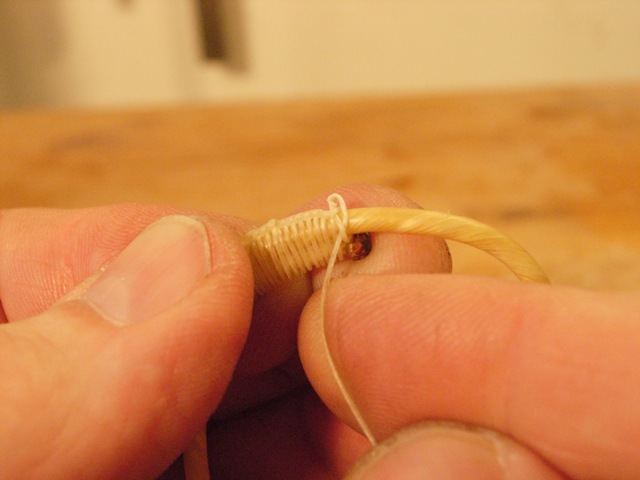
Thereby creating a cinch knot.
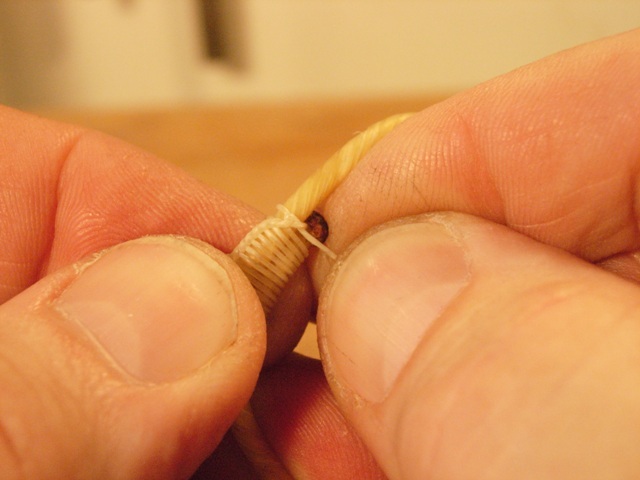
And then, pull this tight.
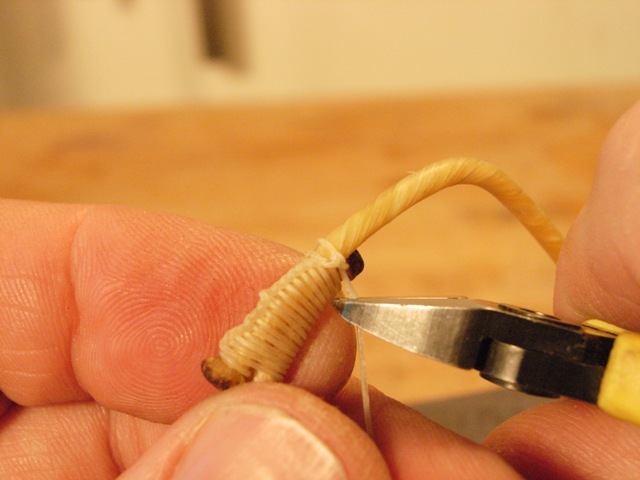
Clip the end of the stitching gut to a length of about 1/8"
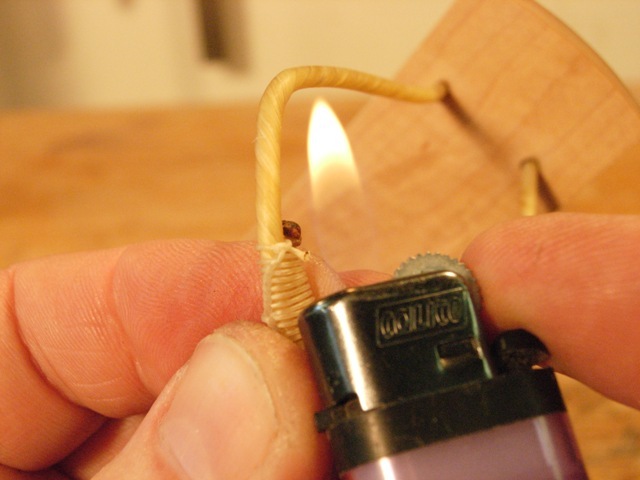
Burn the end of the stitching gut down to the wrappings.
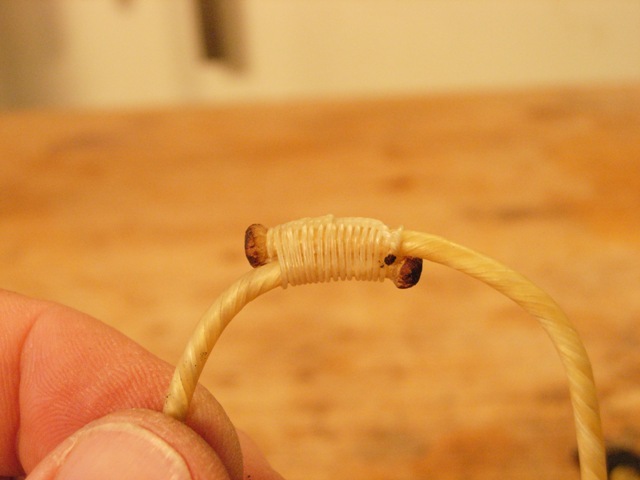
Your tailgut should now look something like this.
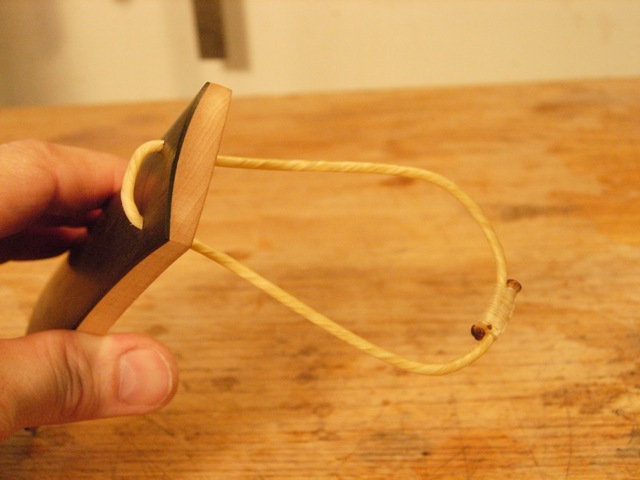
And now it is ready to go on the instrument. When the tension has been on the tailpiece for a while, the wrappings will compress tightly.
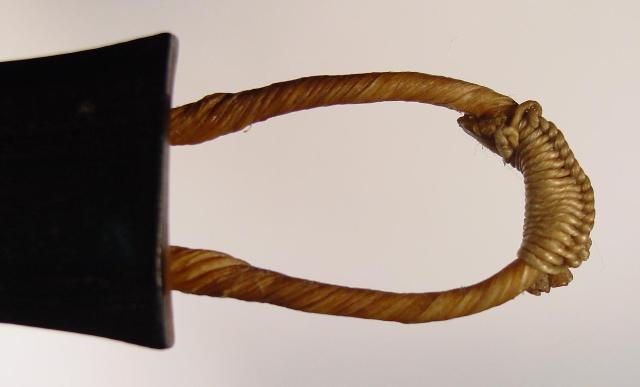
Below is a picture of the E 903(3) tailpiece gut in the Cite de la Musique in Paris, France.
